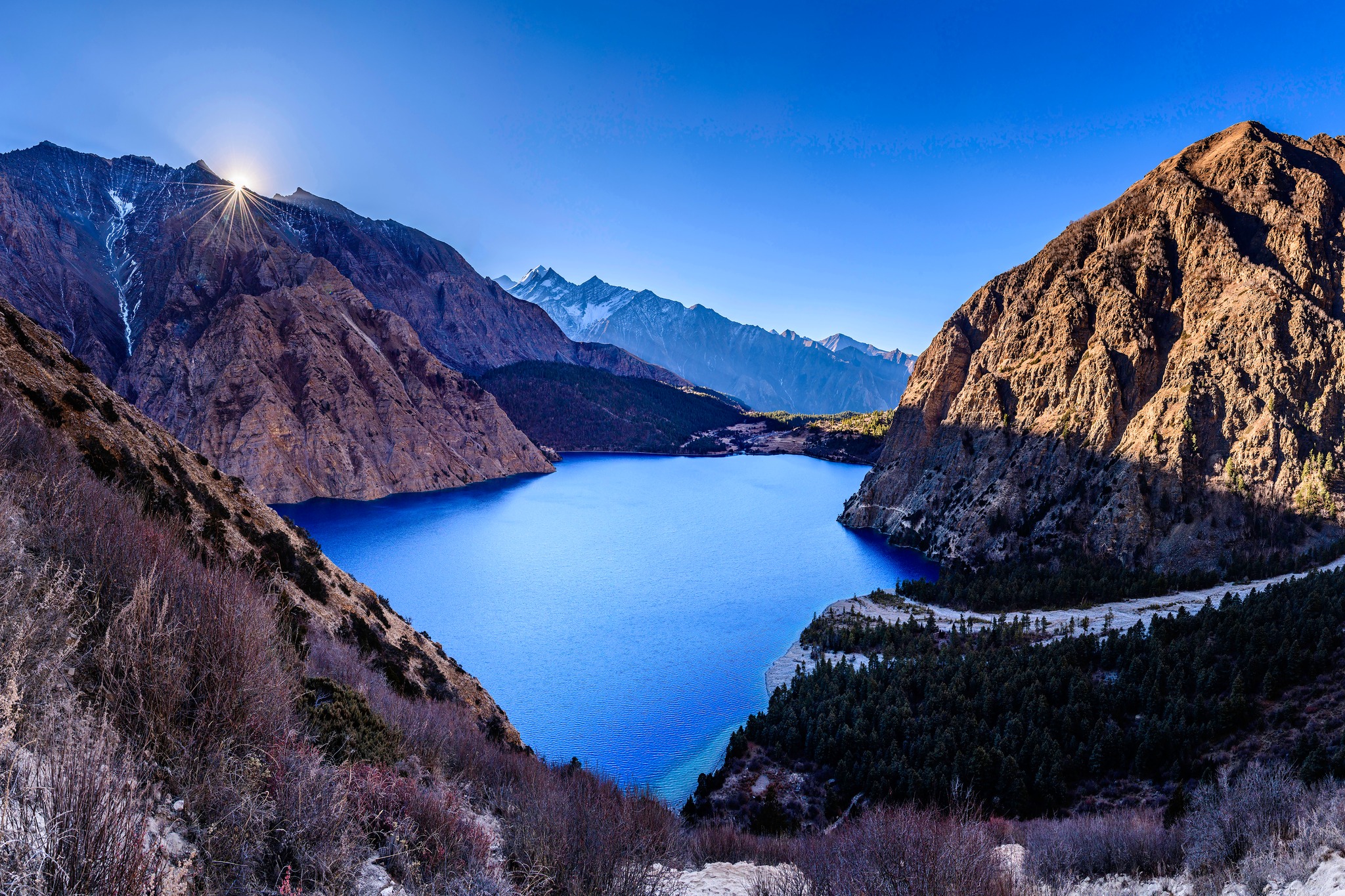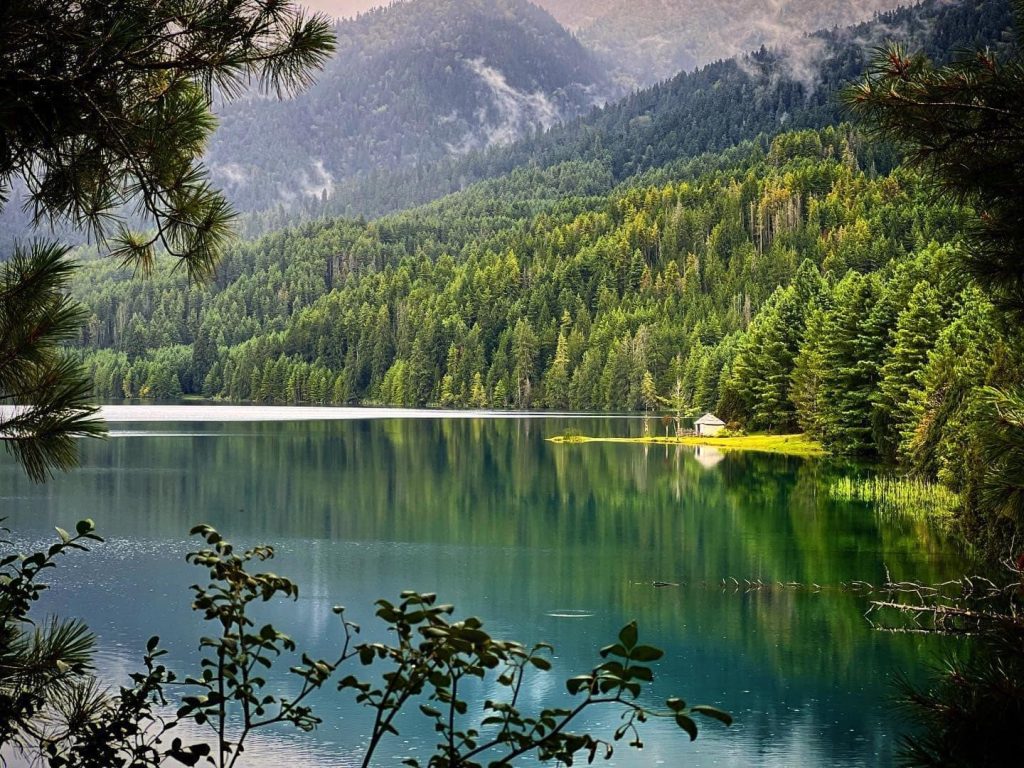
Karnali Province, the largest of Nepal’s seven provinces, is a land of raw beauty, ancient civilization, and true adventure. Often described as Nepal in its purest form, Karnali remains one of the country’s least explored yet most rewarding regions. With pristine lakes, deep valleys, towering peaks, and a rich cultural heritage, it is now emerging as a promising destination for both domestic and international tourism.
Nature’s Masterpiece
The crown jewel of Karnali is undoubtedly Rara Lake, Nepal’s largest and perhaps most enchanting lake. Spread over 10.8 square kilometers at an altitude of 2,990 meters, Rara captivates with its turquoise waters reflecting snowcapped peaks. The lake is also home to the rare snow trout. Visitors can reach Rara either by bus from Surkhet or by flying to Talcha Airport followed by a short hike—an adventure that only adds to its charm.
Equally mesmerizing is Shey Phoksundo Lake in Dolpa, Nepal’s deepest lake at 650 meters. Its dreamlike aquamarine hue and dramatic mountain backdrop make it one of the most picturesque lakes in the world. Recognized globally through Éric Valli’s Oscar-nominated film Himalaya: Caravan, Shey Phoksundo offers both cultural immersion and wilderness adventure.
Karnali is also home to Pachal Jharana in Kalikot—Nepal’s tallest waterfall and among Asia’s highest—plunging 381 meters into a lush gorge. Other serene freshwater attractions include Kupinde Daha, Syarpu Lake, and Bulbule Lake, each offering tranquility for travelers seeking to escape urban life.
A Living Museum of History and Culture
Beyond its natural grandeur, Karnali is steeped in history and tradition. The Sinja Valley of Jumla, regarded as the cradle of the Nepali language, is a heritage site of immense linguistic and archaeological significance. Ancient temples and inscriptions here narrate the roots of Nepal’s identity.
The historic Jajarkot Durbar, a 250-year-old palace, and Kakrebhir, an ancient stone temple revered by both Buddhists and Hindus, highlight the region’s spiritual and artistic legacy. Likewise, Panchakoshi in Dailekh draws pilgrims from Nepal and India with its perpetually burning sacred flame, believed to bless devotees with peace and happiness.
Further north, Limi Valley in Humla preserves Tibetan Buddhist culture, with its 11th-century Halji Monastery and unique architecture. For those seeking cultural immersion, Limi offers a rare glimpse into traditions largely untouched by modernity.

Adventure and Outdoor Thrills
Karnali is a paradise for adventure seekers. Its mighty rivers—the Karnali and Bheri—rank among the world’s top rafting destinations, offering thrilling white-water expeditions through remote canyons and jungles. Trekkers can explore the Rara–Phoksundo circuit, the Sinja Valley route, or demanding high-altitude treks around Kanjirowa Himal.
Emerging activities such as skiing on Kalikot’s snowy patans, paragliding in Surkhet and Jumla, rock climbing in Humla, and bungee jumping over the Tila River gorge showcase Karnali’s potential to rival global adventure hubs.
Beyond Sightseeing: Experiences Await
What sets Karnali apart is not just its sights, but the experiences it offers. Travelers can trek through remote valleys, stay in local homestays, join traditional festivals, and savor authentic cuisines such as Jumla’s organic apples or dhido.
Religious tourism also holds vast potential, with routes to Kailash Mansarovar in Tibet passing through Humla, attracting thousands of Indian pilgrims each year. The province is equally promising for film tourism. The global success of Himalaya: Caravan, shot in Dolpa, proved how Karnali’s landscapes can captivate audiences worldwide. With its pristine backdrops and largely untouched settlements, the region is primed to become Nepal’s next filming hub.
Building a Sustainable Future
Despite its treasures, Karnali faces challenges of infrastructure and limited connectivity. However, even moderate investments could unlock its tourism potential. Developing Rara Lake into a hub akin to Nainital in India, for instance, could transform the local economy. Opportunities range from eco-friendly lake sports, cable cars, and mountain flights to winter sports and apple-based wineries.
Equally important is ensuring sustainability: the future of tourism in Karnali depends on coordination between federal, provincial, and local governments, alongside partnerships with the private sector and local communities. Done right, tourism here can both showcase Karnali to the world and uplift living standards across the province.
The Call of Karnali
For travelers yearning for authenticity, Karnali offers a journey unlike any other. It is a province where emerald lakes meet snowy peaks, where ancient civilizations thrive alongside timeless traditions, and where adventure blends with spiritual calm. As Nepal’s most pristine province prepares to claim its place on the global tourism map, Karnali stands ready to welcome the world. Whether you long for serenity beside a crystal-clear lake, the thrill of a roaring river, or insights from ancient valleys, Karnali promises to leave you spellbound.